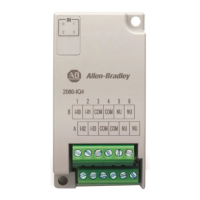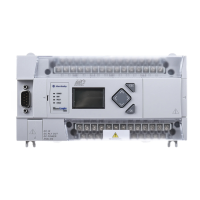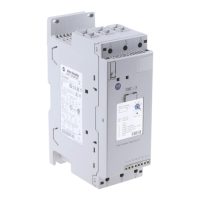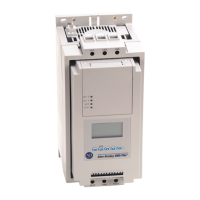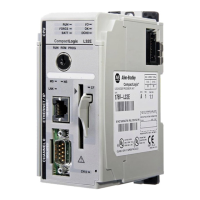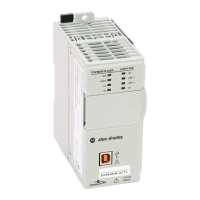Rockwell Automation Publication 2080-UM002M-EN-E - April 2022 327
Appendix G Connect to Networks using DF1
Considerations When Communicating as a DF1 Slave on a Multi-drop
Link
When communication is between either your programming software and a
Micro800 controller or between two Micro800 controllers via slave-to-slave
communication on a larger multi-drop link, the devices depend on a DF1 Half-
Duplex Master to give each of them access in a timely manner. As the number
of slave devices increases, the time between when slave devices are polled also
increases. This increase in time may also be large if you are using low baud
rates. As these time periods grow, you may need to increase the poll timeout
and reply timeout values for slave devices.
Using Modems with Micro800 Programmable Controllers
The types of modems you can use with Micro800 controllers include the
following:
• Dial-up phone modems.
A Micro800 controller, on the receiving end of the dial-up connection,
can be configured for DF1 Full-Duplex protocol with or without
handshaking. The modem connected to the Micro800 controller should
support auto-answer.
• Leased-line modems.
Leased-line modems are used with dedicated phone lines that are
typically leased from the local phone company. The dedicated lines may
be in a point-to-point topology supporting Full-Duplex communications
between two modems or in a multi-drop topology supporting Half-
Duplex communications between three or more modems.
• Radio modems.
Radio modems may be implemented in a point-to-point topology
supporting either Half-Duplex or Full-Duplex communications, or in a
multi-drop topology supporting Half-Duplex communications between
three or more modems. Micro800 controllers also support DF1 Radio
Modem protocol.
• Line drivers.
Line drivers, also called short-haul modems, do not actually modulate the
serial data, but rather condition the electrical signals to operate reliably
over long transmission distances (up to several miles). Line drivers are
available in Full-Duplex and Half-Duplex models.
For point-to-point Full-Duplex modem connections that do not require any
modem handshaking signals to operate, use DF1 Full-Duplex protocol with no
handshaking. For point-to-point Full-Duplex modem connections that require
RTS/CTS handshaking, use DF1 Full-Duplex protocol with handshaking.
For radio modem connections, use DF1 Radio Modem protocol, especially if
store and forward capability is required.
For general multi-drop modem connections, or for point-to-point modem
connections that require RTS/CTS handshaking, use DF1 Half-Duplex slave
protocol. In this case, one (and only one) of the other devices must be
configured for DF1 Half-Duplex master protocol.
IMPORTANT Program download is not supported in DF1 Half-Duplex and Radio
Modem for Micro850 (2080-L50E) and Micro870 (2080-L70E) controllers
firmware revision 20 or later.
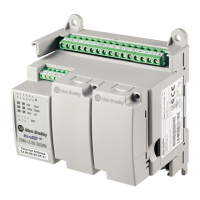
